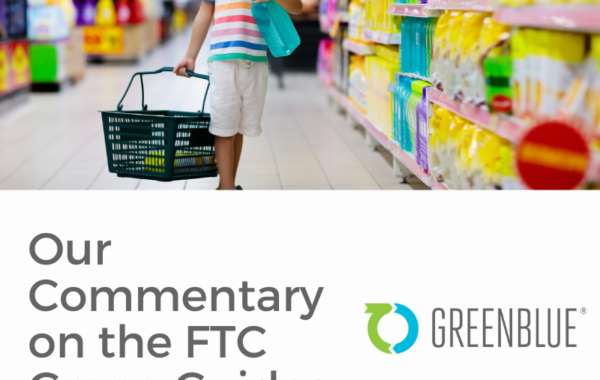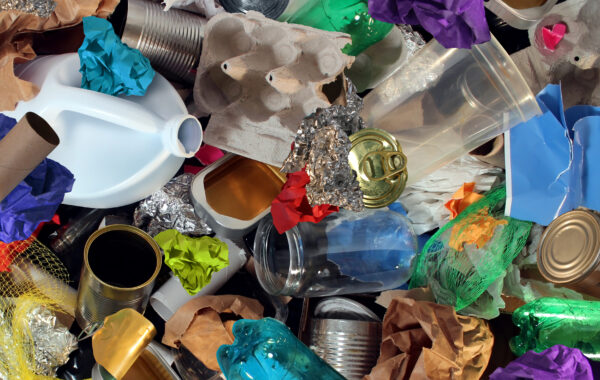May 3, 2022
On the second day of SPC Impact 2022, Tom Pollock, Director of Member Engagement at GreenBlue, moderated a panel regarding Life Cycle Assessment (LCA). The session’s panel was made up of representatives from Georgia Pacific, SCS Global Services, and BillerudKorsnas. The session was designed to help unpack the current thinking on LCA methodology, the limitations of this type of analysis, and most importantly, how LCAs can be used credibly and effectively to meet sustainable packaging goals.
LCA is a popular methodology used in sustainability research to study the environmental impacts of products or systems over their life cycle. While the specifics of life cycles vary with different products and systems being assessed, they can be generally described as the sourcing, production, distribution, use, and disposal of products or services. This conceptualization of the ”life cycle” assessed in an LCA is referred to as a “cradle to grave” framework. Other frameworks, such as “cradle to gate” or “cradle to cradle” can also be utilized. The impact categories included can also differ between studies, but LCAs generally include six or more environmental impact categories such as: global warming, water toxicity, human health, depletion of mineral and metallic resources, ozone depletion, etc. LCA’s are able to map data about the inputs and outputs of a system across its life cycle onto the impact categories which enables standardized assessments and comparison among alternatives for the products or services.
The panel identified many drivers of LCA popularity and use. Currently, increases in LCA use can be linked to the emergence of the circular economy framework, climate change, and better data about environmental impacts. Historically, LCA was used to look at one product’s relative impacts with a consistent methodology to develop an “on product” environmental score. However, hot spot identification and comparative assessment have emerged as the more popular uses of LCA. For example, an LCA could be useful in examining which component of a multicomponent package has the highest contribution to climate change to enable optimization through strategic redesign. Likewise, an LCA could be conducted early in the design process to assess differences in environmental impacts of possible product-package systems before they are introduced to the market. However, the panel was clear in reiterating that comparative assertion is very difficult to do well and communicate clearly to consumers.
A key point the panel emphasized is that an LCA is only part of the story of the product-package system’s impacts, not the final word. It is one tool to assess a product’s impact, not the only tool that can and should be used. This is primarily due to the inherent limitations of the methodology. A common limitation for LCAs is the scope of the available data about the items being compared. The panel also addressed the inability to generalize results as LCAs are very specific to certain times, places, and data about processes. Likewise, there are unknowns or missing data that are currently being researched that are not currently included in the impact factors utilized in LCAs. Long term health effects of microplastics or PFAS being present in our environment are only starting to be documented and understood. As this body of research is young, it has not been widely adopted into existing LCA software packages. The impact of littering is also not currently included. Additionally, as panelists pointed out, the environmental impacts are only one aspect of sustainability. Economic and social impacts are also vital to consider but are not included in an LCA.
The discussion of limitations focused on the importance of proper assumption making and disclosure of the reasoning for all subjective aspects of the assessment, such as the reasoning for the selection of the functional unit. Panelists recommend using the published product category rules to standardize the assumptions being used to minimize the limitation of the effect of assumptions on results. An LCA is only as strong as the strength of the data and processes used to conduct it.
Despite the shortcomings, LCA is still regarded as the best methodology to assess the environmental impacts of packaging. LCAs are often included in sustainability goal setting or marketing of a company’s sustainability efforts. The recommendation from the panel on what steps to take to making LCA most useful in meeting these goals is to focus on data collection. Primary data about manufacturing processes and scope 3 emissions inventory building are ways to improve the accuracy of the results. As the packaging industry strives to implement more sustainable and circular business models, LCA can be used to avoid regrettable substitutions or unintended environmental consequences. LCA is a tool that can be used to point out where gut reactions or popular conceptions are incorrect so that adopted solutions have minimized negative impacts.
Diving deeper: resources for further learning
If you are interested in adding standardized assessments of social and economic impacts of products or systems, there are tools you can use. While not discussed in this session, the social and economic impacts of a product or process have their own standardized methodologies, the Product Social Impact Assessment and Life Cycle Costing (LCC) respectively. Like LCA, both of these tools have their own inherent limitations and can help provide more robust insight if included alongside a traditional LCA analysis.
If you are interested in reading more about the impacts of boundary drawing, data availability, and software choice on the validity and accuracy of life cycle assessment, there is a large body of literature. This paper on LCAs about bioplastics and petrochemical based plastics explores the methodological choices made when doing LCA research, and how those choices influence the results.





